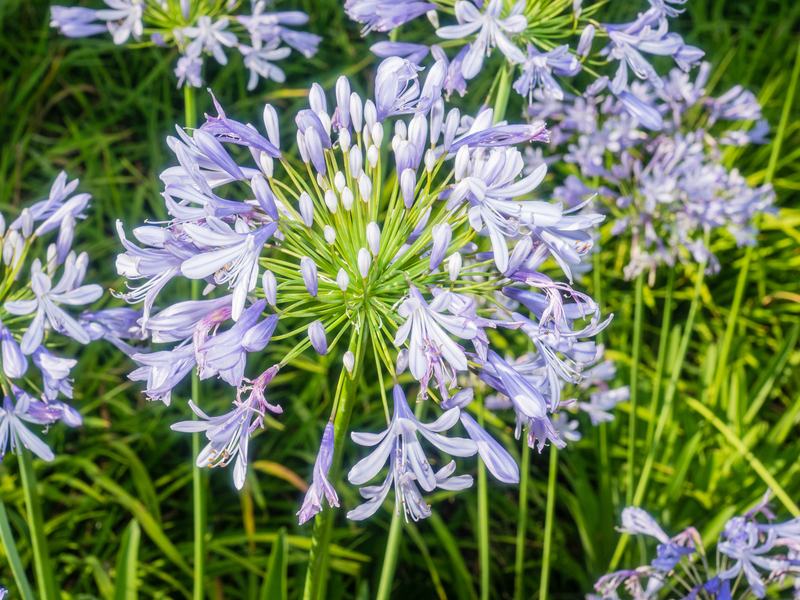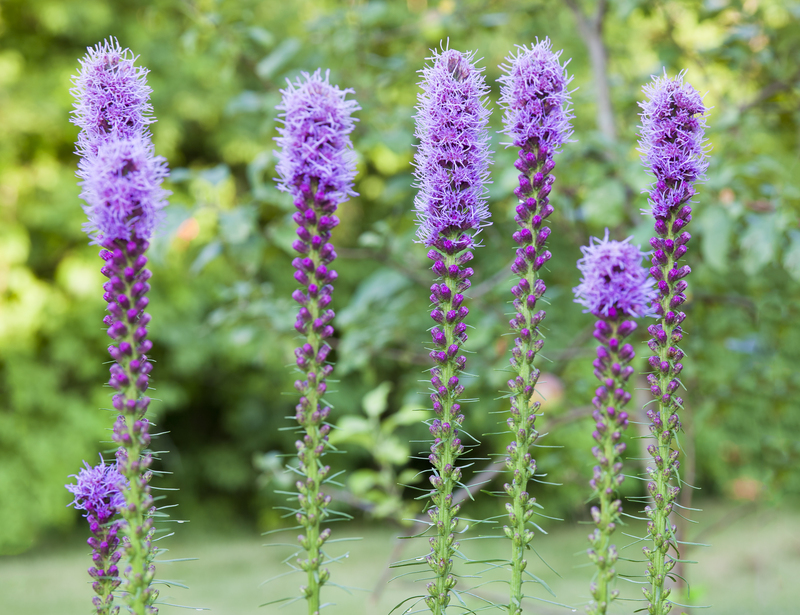Exploring Artistic Forms in Hedge Trimming
Posted on 27/05/2025
Exploring Artistic Forms in Hedge Trimming
Hedge trimming is far more than a simple gardening task--it is an evocative art form, a method by which green landscapes are transformed into living sculptures. Today, as homeowners and designers alike pay closer attention to outdoor aesthetics, artistic hedge trimming has claimed its rightful place as a form of creative expression. This article delves deep into the art of hedge shaping, exploring both the fundamental techniques and the elaborate masterpieces that result from visionary hedge artistry.

What is Artistic Hedge Trimming?
Artistic hedge trimming, also known as topiary art or
The History of Hedge Art
The roots of artistic hedge shaping can be traced back to ancient Roman gardens, where clipped boxwoods and evergreens adorned sprawling estates. The art blossomed in Renaissance Europe, especially within the grand gardens of France, England, and Italy. These "outdoor masterpieces" served not only as status symbols but also as a testament to human control over nature.
Modern-Day Hedge Sculpting
In contemporary landscapes, hedge art merges traditional techniques with innovative designs and cutting-edge tools. Gardening enthusiasts and professional landscapers create jaw-dropping displays at public parks, private estates, and even urban spaces. Today, artistic forms in hedge trimming are celebrated worldwide--blending functionality, creativity, and sustainability.
Types of Artistic Forms in Hedge Trimming
There's a wealth of styles in creative hedge trimming. Whether you're hoping to add a whimsical flair or a sophisticated edge to your garden, explore these popular artistic forms:
- Geometric Shapes: Spheres, cubes, cones, pyramids, and rectangles create a sleek, minimalist look that complements modern gardens.
- Animals & Figures: From playful dolphins to majestic peacocks and even human silhouettes, animal and figurative topiary astound visitors with their realism and charm.
- Arches and Tunnels: Grand walkways enveloped in living green! Hedge arches and tunnels invite guests to journey through enchanting pathways.
- Spirals: Create a sense of movement and depth with elegant spiral forms, popular for framing entrances and accentuating corners.
- Abstract Art: For the avant-garde homeowner, abstract hedge designs challenge the ocular senses and allow ultimate creative freedom.
- Thematic Displays: Celebrate holidays or special occasions by shaping hedges into seasonal symbols--think Christmas trees, hearts, or even letters and logos.
Choosing the Right Plants for Artful Hedge Sculpting
Not all plants lend themselves to artistic hedge trimming. Ideal candidates should be dense, evergreen, and capable of producing new shoots after every cut. Here are some favorites among hedge artists:
- Boxwood (Buxus): Revered for centuries due to its small leaves and fine texture--perfect for detailed figures.
- Yew (Taxus): This slow-growing evergreen is noted for its longevity and regenerative ability.
- Privet (Ligustrum): Fast-growing and adaptable, privet is a cost-effective option for large, lush hedges.
- Holly (Ilex): Adds a festive touch, especially with its glossy green leaves and red berries.
- Lonicera (Honeysuckle): When trimmed regularly, this vigorous grower produces thick, green coverage.
- Laurel (Prunus laurocerasus): Larger leaves make this best for bolder, less intricate forms.
Tools and Techniques for Artistic Hedge Shaping
Mastering hedge sculpture requires more than imagination; it demands the right set of tools and a solid grasp of sculpting techniques. Here's what every aspiring hedge artist should know:
Essential Tools
- Manual Hedge Shears: Offer precise cuts, essential for detailed work and final touches.
- Electric or Battery Hedge Trimmers: Ideal for shaping larger hedges and achieving uniformity in long rows.
- Topiary Frames: Wire frames that serve as guides for complex shapes--especially animals and figures.
- String and Stakes: Help outline straight lines, geometric forms, or symmetrical designs.
- Ladders and Platforms: Necessary for reaching the tops of tall hedges safely.
- Protective Gear: Safety goggles, gloves, and stable footwear protect you during shaping sessions.
Techniques for Stunning Hedge Forms
1. Start with a Sketch: Before cutting, visualize the desired form or sketch it on paper. For beginners, simple geometric forms are ideal starting points.
2. Create a Framework: For intricate shapes, consider using a wire frame or template. This guide ensures even growth and precise trimming.
3. Trim Gradually: Remove a little at a time; it's easier to take more off than to put it back! Frequent, light trims encourage denser growth and smoother surfaces.
4. Stand Back and Assess: Step back regularly to view your work from different angles. This prevents misshapen spots and ensures balanced proportions.
5. Maintenance: Regular maintenance is key to keeping artistic hedge forms crisp. Trim at least twice a year--more for fast-growing species.
Benefits of Artistic Hedge Trimming
Artistic hedge forms do more than beautify gardens--they deliver tangible benefits to your landscape and lifestyle:
- Curb Appeal: Striking hedge shapes instantly elevate the look of any property, leaving a memorable impression on visitors and potential buyers.
- Unique Identity: Artistic hedge forms can reflect personal tastes, family traditions, or business branding--turning your garden into a one-of-a-kind space.
- Natural Privacy: Carefully sculpted hedges serve as living walls, yielding both privacy and noise reduction without sacrificing beauty.
- Wildlife Shelter: Dense, well-maintained hedges provide sanctuary and food for birds and beneficial insects.
- Seasonal Interest: Evergreens and flowering hedge species ensure year-round visual attraction, with foliage, blossoms, or berries.
- Therapeutic Value: The meditative act of trimming and the joy of seeing your creation thrive can greatly enhance mental well-being.
Popular Examples of Artistic Hedge Forms
Inspired to try hedge trimming art at home or appreciate it on your travels? Here are some world-famous examples:
- The Garden of Marqueyssac (France): Over 150,000 hand-pruned boxwood shrubs form billowing clouds and undulating waves along dramatic cliffside paths.
- Levens Hall (England): Europe's oldest topiary garden features elaborate pyramids, spirals, and chess set figures carved from ancient yews.
- Longwood Gardens (USA): A blend of traditional and modern topiary, including animal shapes and geometric hedges, all in broad formal gardens.
- Disney Parks: Whimsical characters--from Mickey Mouse to mythical creatures--brought to life with meticulous living sculpture.
Bringing Artistic Forms into Your Garden
Transforming your outdoor space with inventive hedge trimming doesn't require a mansion or a team of gardeners. Here's how you can start small and grow your skills:
- Begin with Basics: Choose a straightforward shape (such as a ball or cube) and practice on a medium-sized shrub. Gradually try more elaborate figures as your confidence builds.
- Invest in Quality Tools: The right shears or trimmers can make all the difference in achieving smooth lines and clean edges.
- Study Inspiration: Visit local gardens, browse gardening books, or follow topiary artists online for fresh ideas.
- Embrace Patience: Mastery takes time. Regular care and incremental shaping ensure the healthiest-- and most beautiful--results.

Artistic Forms in Hedge Trimming: Tips for Lasting Success
Ready to unleash your inner artist through hedge trimming creativity? Keep your green masterpieces healthy and impressive with these time-tested tips:
- Watering: Newly shaped hedges need consistent moisture for recovery and vigorous regrowth.
- Fertilize: Nourish your hedge with slow-release, balanced fertilizer each spring.
- Pest & Disease Management: Watch for common issues such as aphids, spider mites, and fungal diseases. Address problems early to maintain dense foliage.
- Sunlight: Ensure your plant choices suit the amount of sunlight in your landscape.
- Seasonal Care: Trim in late spring or early summer to minimize stress. Avoid heavy pruning during frost or drought conditions.
- Record Progress: Take photos and notes as your living sculptures evolve. This not only celebrates your success but also helps track what works best over time.
Conclusion: The Living Art of Hedge Trimming
From simple geometric forms to grand, whimsical displays, exploring artistic forms in hedge trimming opens a world of creative and ecological rewards. Whether you are embarking on this journey as a hobbyist or commissioning a showpiece for a public park, remember that topiary art is ultimately about the joyful connection between humans and nature. With imagination, patience, and the right know-how, any gardener can transform a simple green hedge into a lasting work of living art.
Embrace the art of hedge trimming--and let your landscape become your canvas.

